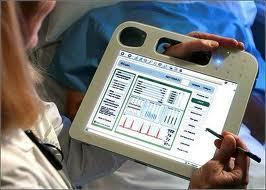From the May 2011 issue of HealthCare Business News magazine
This report originally appeared in the May 2011 issue of DOTmed Business News
By Atul Agarwal
Diagnostic imaging’s move from film to filmless has significantly changed health care. Technology has digitized the processing of images and reports, enabling quicker access to important health care information. Yet the industry continues to struggle with efficiency and cost optimization. Consider today’s challenges in sharing diagnostic images across vendor systems, across multiple locations, among referring clinicians, and among patients themselves.
Today, physicians expect near-immediate access to information about patients, and patients are increasingly asking for ready access to records as well. Lab results and pharmacy information, for example, are available in most electronic health records and personal health records. So why not images? Why do we still see patients carrying image CDs (and sometimes even films) across provider settings? What’s on the radar as we move to newer health information exchange environments?
Most of today’s health care solutions were designed to provide document-centric, physician-to-physician communication. Physicians exchange discharge summary documents, cardiac evidence documents, lab reports, referral notes and other written documents or reports, but not images.
Why? Because image exchange is challenging – images are large; image vendors do not adhere to a single standard format; specialized viewing technology is needed; and many institutions have not added diagnostic images to their primary networks due to the cost and burden of hardware, staff and/or systems. Additionally, challenges arise when considering approaches for aligning a specific patient’s documents (imaging reports) and imaging studies within the same solution.
“Souped up” client-server PACS
Over time, technology has enabled more cost-effective, timely exchange and viewing of diagnostic images. Historically, a radiologist workstation served as the working environment for diagnostic imaging. This is a networked computer with most resources installed locally, rather than distributed over a network. Radiology reading rooms, for example, provided environments for radiologists to work on client-server based PACS solutions. These systems provided “souped-up” capacity to handle massive data volume and advanced image processing.
With the advent of Web technologies, many radiology practices moved to Web-based, “thick client” PACS viewers. This typically describes a scenario in which a Web browser is used to deploy a full application. In this environment, images are not sent to reading workstations ahead of time, thus time and cost savings can be achieved. Because images are retrieved from the PACS archive in real-time; both data duplication and pre-routing complexities are eliminated. For security reasons, special permissions are often required to download a web-based PACS onto a PC. This can present problems, especially in healthcare institutions with strict IT policies to prevent viruses and attacks. Generally, special permissions can be readily managed within the controlled environment of a radiology department. In attempting to get images to “the masses” (i.e., to multiple PCs across disparate organizations), permission management becomes a more complex obstacle.
